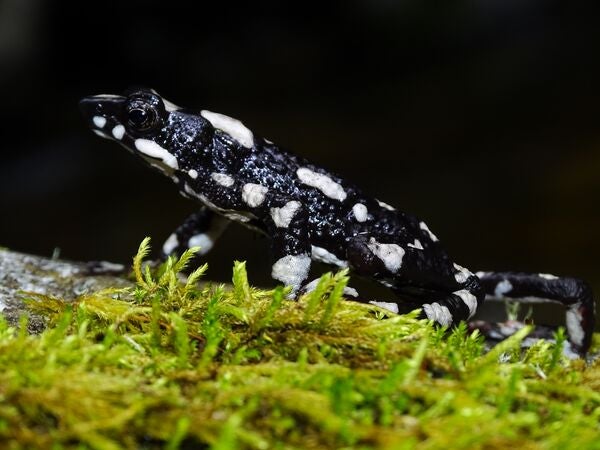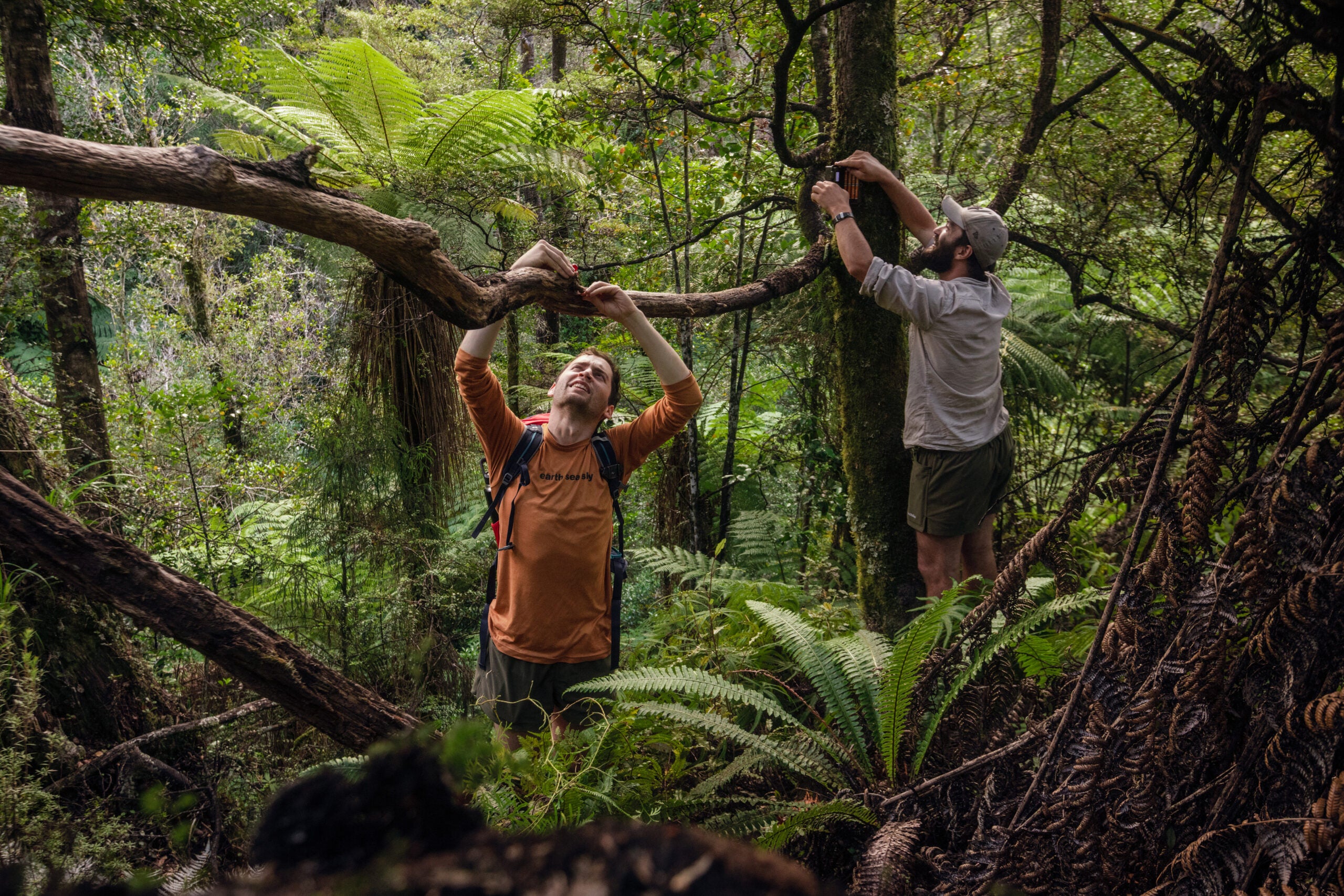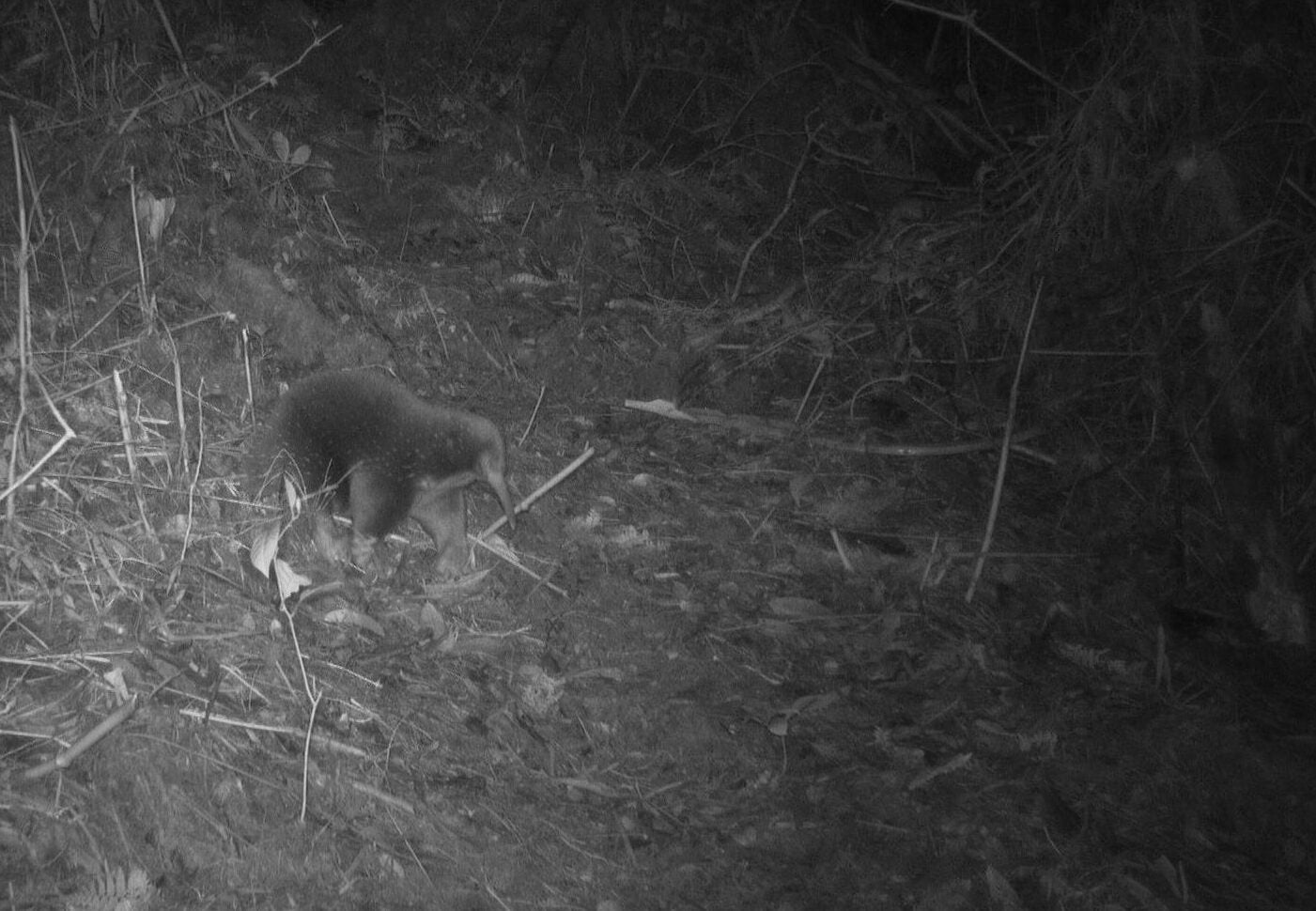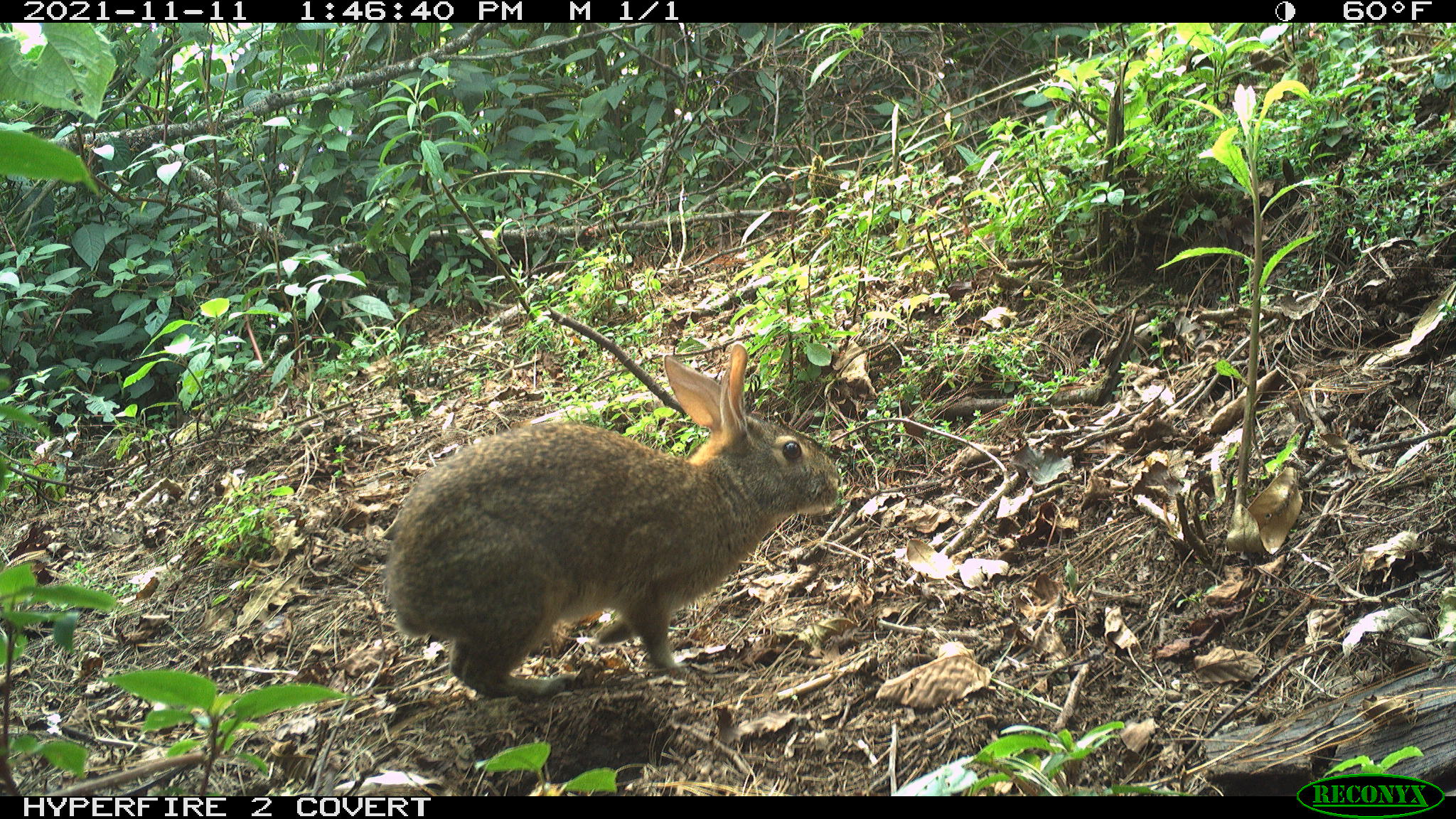

Lost Small Mammals
Our most wanted lost small mammals include those species that have been lost to science for at least a decade (and often for much longer!) and, like our most wanted lost species, may be lost for a variety of reasons. We worked with the IUCN SSC Small Mammal Specialist Group and other partners to determine this list of most wanted small mammals. They represent a broad geographical reach, and may present opportunities for inspiring conservation action.
Illustrations from the Handbook of Mammals of the World (© Lynx Edicions. Toni Llobet).
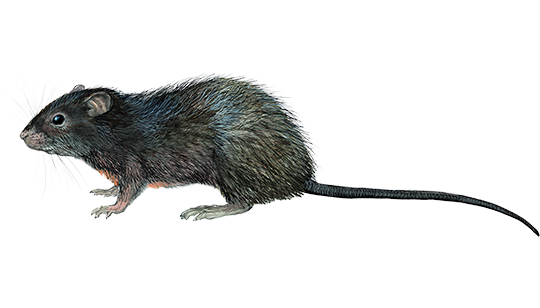
Black Giant Rat
Scientific Name: Uromys boeadii
Last Seen: 1963 in Indonesia
Years Lost: 61
Red List Status: Critically Endangered
The Biak Giant Rat is known only from one individual that was collected about 15 miles outside of the town of Biak on Indonesia’s Biak Island in 1963. Virtually nothing is known about the species, though conservationists believe they likely live in primary rainforest and that forest destruction and hunting are major threats to the species’ survival. The species is a priority for the Asian Species Action Partnership (ASAP), which identifies some of the most threatened species in Southeast Asia. Giant rats (also known as giant naked-tailed rats) are some of the least understood small mammal species in the world. Some giant rat species can group up to two pounds and 1.5-feet long, which is significantly larger than the city rats we are familiar with. Conservationists hope to find the Biak Giant Rat in part to answer questions about the species and to determine the best way forward to safeguard this species and another lost giant rat on Biak, Emma’s Giant Rat.
Last Seen: 1963 in Indonesia
Years Lost: 61
Red List Status: Critically Endangered
The Biak Giant Rat is known only from one individual that was collected about 15 miles outside of the town of Biak on Indonesia’s Biak Island in 1963. Virtually nothing is known about the species, though conservationists believe they likely live in primary rainforest and that forest destruction and hunting are major threats to the species’ survival. The species is a priority for the Asian Species Action Partnership (ASAP), which identifies some of the most threatened species in Southeast Asia. Giant rats (also known as giant naked-tailed rats) are some of the least understood small mammal species in the world. Some giant rat species can group up to two pounds and 1.5-feet long, which is significantly larger than the city rats we are familiar with. Conservationists hope to find the Biak Giant Rat in part to answer questions about the species and to determine the best way forward to safeguard this species and another lost giant rat on Biak, Emma’s Giant Rat.
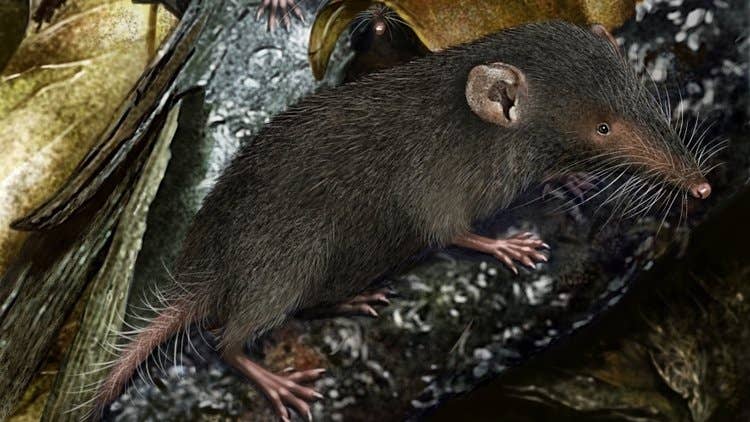
Christmas Island Shrew
Scientific Name: Crocidura trichura
Last Seen: 1985 on Christmas Island, Australia
Years Lost: 39
Red List Status: Critically Endangered
The Christmas Island Shrew is Australia’s only native shrew. When people settled on Christmas Island at the end of the 19th century the species was widespread, but now may be extinct, as is the case with the Christmas Island’s Pipistrelle Bat, which was officially declared extinct in September of 2017. Past descriptions of Christmas Island mention this shrew’s short shrill squeaks, which were commonly heard throughout the island’s plateau and terrace rainforests, where it sheltered in holes in rocks and the roots of trees, and foraged for small beetles. However, by 1908 it had declined so rapidly that is was presumed extinct, having succumbed to the same disease that wiped out Christmas Island’s two endemic rat species during that decade. This disease, trypanosomisis, was introduced to the island by the invasive black rats that accompanied human settlers.
Then, in 1985, two shrews were accidentally rediscovered in separate parts of forest. Intensive survey efforts since 2000 have been unable to re-rediscover it again. Extensive clearance of its rainforest habitat for mining, introduced diseases, and invasive predators all threaten any remaining individuals, whose national recovery plan expires in 2017, with renewal uncertain. Population explosions of invasive Yellow Crazy Ants and human ant-control methods mean that if this shrew has clung on so far, it is in serious need of our help to keep clinging to existence on Christmas Island.
Last Seen: 1985 on Christmas Island, Australia
Years Lost: 39
Red List Status: Critically Endangered
The Christmas Island Shrew is Australia’s only native shrew. When people settled on Christmas Island at the end of the 19th century the species was widespread, but now may be extinct, as is the case with the Christmas Island’s Pipistrelle Bat, which was officially declared extinct in September of 2017. Past descriptions of Christmas Island mention this shrew’s short shrill squeaks, which were commonly heard throughout the island’s plateau and terrace rainforests, where it sheltered in holes in rocks and the roots of trees, and foraged for small beetles. However, by 1908 it had declined so rapidly that is was presumed extinct, having succumbed to the same disease that wiped out Christmas Island’s two endemic rat species during that decade. This disease, trypanosomisis, was introduced to the island by the invasive black rats that accompanied human settlers.
Then, in 1985, two shrews were accidentally rediscovered in separate parts of forest. Intensive survey efforts since 2000 have been unable to re-rediscover it again. Extensive clearance of its rainforest habitat for mining, introduced diseases, and invasive predators all threaten any remaining individuals, whose national recovery plan expires in 2017, with renewal uncertain. Population explosions of invasive Yellow Crazy Ants and human ant-control methods mean that if this shrew has clung on so far, it is in serious need of our help to keep clinging to existence on Christmas Island.
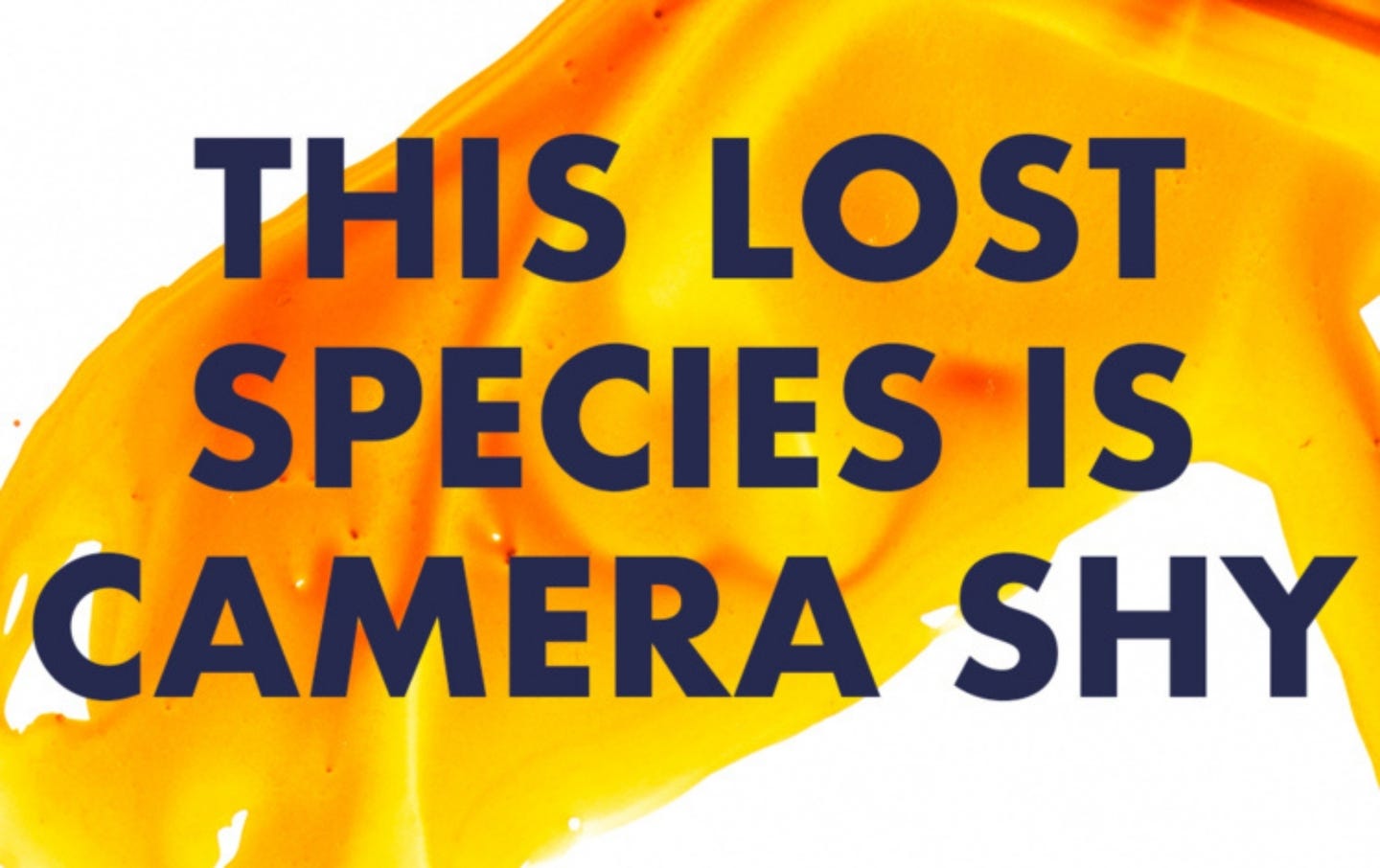
Eisentraut’s Mouse Shrew
Scientific Name: Myosorex eisentrauti
Last Seen: 1968
Years Lost: 56
Red List Status: Critically Endangered
Eisentrout’s Mouse Shrew is unique to the island of Bioko, where it is known from the higher reaches of Equatorial Guinea’s tallest mountain, Pic Santa Isabel. This mysterious little insectivore inhabits montane tropical moist forests at elevations of more than 2,000 metres above sea level, but it has not been seen for nearly 50 years. Very little is known about its ecology, but the 50km2 of habitat where it was previously found is suffering degradation and encroachment from Bioko’s human populous, so it is thought to be at critical risk of extinction, if it indeed still survives. Studies of the high forested areas of Pic Santa Isabel are urgently needed to try to rediscover any remaining animals and to find out how many remain, where they are specifically located, the worst threats they face, and to explore their ecology, behaviour and way of life.
Last Seen: 1968
Years Lost: 56
Red List Status: Critically Endangered
Eisentrout’s Mouse Shrew is unique to the island of Bioko, where it is known from the higher reaches of Equatorial Guinea’s tallest mountain, Pic Santa Isabel. This mysterious little insectivore inhabits montane tropical moist forests at elevations of more than 2,000 metres above sea level, but it has not been seen for nearly 50 years. Very little is known about its ecology, but the 50km2 of habitat where it was previously found is suffering degradation and encroachment from Bioko’s human populous, so it is thought to be at critical risk of extinction, if it indeed still survives. Studies of the high forested areas of Pic Santa Isabel are urgently needed to try to rediscover any remaining animals and to find out how many remain, where they are specifically located, the worst threats they face, and to explore their ecology, behaviour and way of life.

Ethiopian Water Mouse
Scientific Name: Nilopegamys plumbeus
Last Seen: 1920S IN ETHIOPIA
Years Lost: 100
Red List Status: Critically Endangered
The Ethiopian Water Mouse, also called the Ethiopian Amphibious Rat, has only been found near the source of the Little Abbai at Gojjam, northwestern Ethiopia. The species was discovered in the 1920s and a single individual was collected. Today, this remains the only source of information we have about this intriguing rodent. This species is very well adapted for living in and around water because it has various extreme adaptations for swimming, including a large brain, swollen muzzle and extensive facial bristles; these may act as sonar to help it hunt aquatic invertebrates. It also has small, densely furred ears, a soft, dense fur coat for buoyancy, and enlarged hind feet with hairy fringes. Its feet are broad enough to be used as paddles for swift, agile swimming. This mouse was found at 2,600 metres, in an area of riverine habitat already degraded by livestock overgrazing and has now been completely destroyed. Two attempts to find this unique water mouse have failed. However, the species may not yet have sunk into oblivion. We need to determine, once and for all, whether this most extremely adapted of all African water-dwelling mice is still alive and paddling.
Last Seen: 1920S IN ETHIOPIA
Years Lost: 100
Red List Status: Critically Endangered
The Ethiopian Water Mouse, also called the Ethiopian Amphibious Rat, has only been found near the source of the Little Abbai at Gojjam, northwestern Ethiopia. The species was discovered in the 1920s and a single individual was collected. Today, this remains the only source of information we have about this intriguing rodent. This species is very well adapted for living in and around water because it has various extreme adaptations for swimming, including a large brain, swollen muzzle and extensive facial bristles; these may act as sonar to help it hunt aquatic invertebrates. It also has small, densely furred ears, a soft, dense fur coat for buoyancy, and enlarged hind feet with hairy fringes. Its feet are broad enough to be used as paddles for swift, agile swimming. This mouse was found at 2,600 metres, in an area of riverine habitat already degraded by livestock overgrazing and has now been completely destroyed. Two attempts to find this unique water mouse have failed. However, the species may not yet have sunk into oblivion. We need to determine, once and for all, whether this most extremely adapted of all African water-dwelling mice is still alive and paddling.
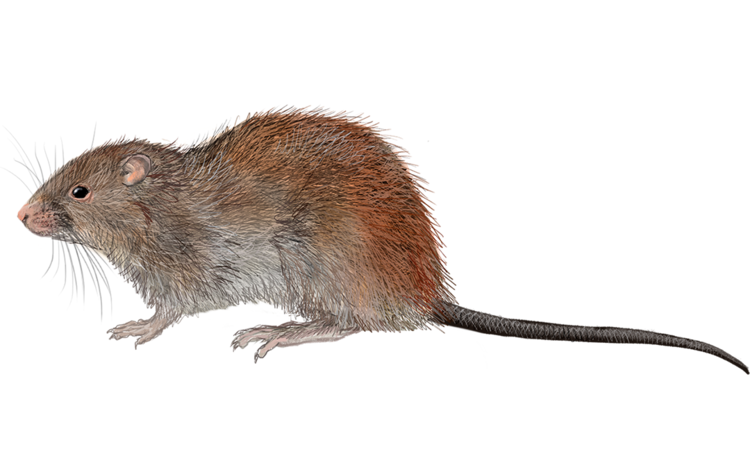
Guadalcanal Rat
Scientific Name: Uromys porculus
Last Seen: 1886–1888 on the Solomon Islands
Years Lost: At least 138
Red List Status: Critically Endangered
The Guadalcanal Rat is only known from three individuals that were collected between 1886 and 1888. It was encountered at Aola, Guadalcanal, in the Solomon Islands, where no local knowledge of the species remains. Since its discovery, one unconfirmed sighting in 1995 provides a single ray of hope that it may not yet be extinct. This rat is a ground-dwelling species that probably favors lowland tropical forest habitat and may live in caves. The island of Guadalcanal has never been properly surveyed for the species, so this needs to happen before habitat loss and feral cat predation eradicate this unique species forever.
Last Seen: 1886–1888 on the Solomon Islands
Years Lost: At least 138
Red List Status: Critically Endangered
The Guadalcanal Rat is only known from three individuals that were collected between 1886 and 1888. It was encountered at Aola, Guadalcanal, in the Solomon Islands, where no local knowledge of the species remains. Since its discovery, one unconfirmed sighting in 1995 provides a single ray of hope that it may not yet be extinct. This rat is a ground-dwelling species that probably favors lowland tropical forest habitat and may live in caves. The island of Guadalcanal has never been properly surveyed for the species, so this needs to happen before habitat loss and feral cat predation eradicate this unique species forever.
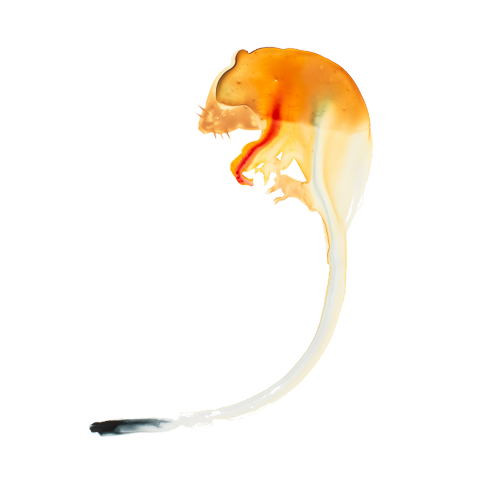
Ilin Island Cloudrunner
Scientific Name: Crateromys paulus
Last Seen: 1953 in the Philippines
Years Lost: 71
Red List Status: Data Deficient
The Ilin Island Cloudrunner is only known from one individual purchased at a market on the Philippines’ Ilin Island. The species was “found” in the collection at the Smithsonian National Museum of Natural History decades after it was donated. Although surveys with local communities have not revealed knowledge of the species, there are some unverified reports from Mindoro. Scientists don’t know anything about the cloudrunner’s habitat or ecology, but are eager to learn in order to best safeguard the species.
(Illustration by Alexis Rockman)
Last Seen: 1953 in the Philippines
Years Lost: 71
Red List Status: Data Deficient
The Ilin Island Cloudrunner is only known from one individual purchased at a market on the Philippines’ Ilin Island. The species was “found” in the collection at the Smithsonian National Museum of Natural History decades after it was donated. Although surveys with local communities have not revealed knowledge of the species, there are some unverified reports from Mindoro. Scientists don’t know anything about the cloudrunner’s habitat or ecology, but are eager to learn in order to best safeguard the species.
(Illustration by Alexis Rockman)
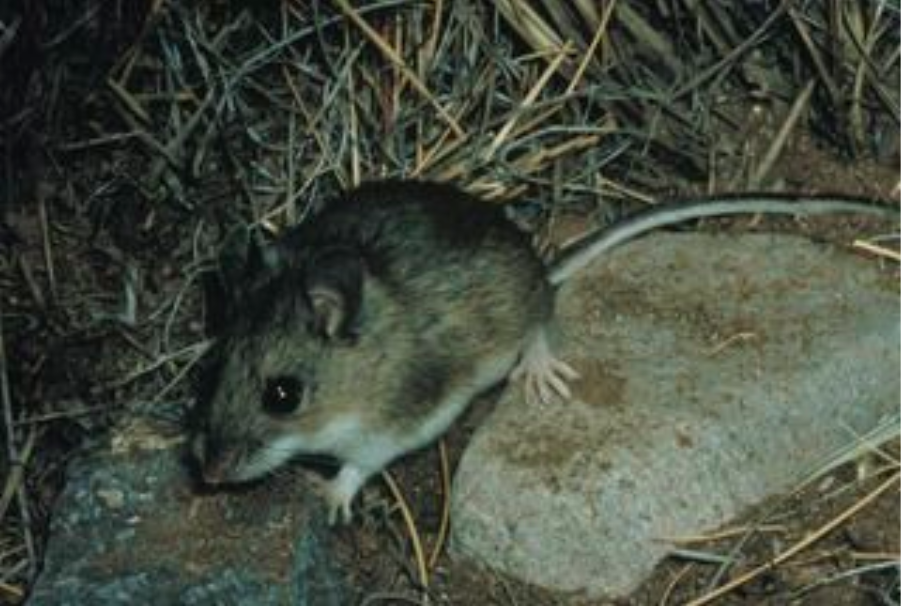
Isla Angel Mouse
Scientific Name: Peromyscus guardia
Last Seen: 1991 in Mexico
Years Lost: 33
Red List Status: Critically Endangered
The Isla Angel Mouse once existed on four islands in the Gulf of California. It was still common in the 1960s, but the introduction of invasive predators and competitors by humans caused its extinction on three of the islands and the possible extinction on the last. This mouse is thought to be descended from a colony of cactus mice, which were isolated from the American mainland during the last ice age. The mouse is thought to prefer desert scrub-land, having been found on the sandy beaches and rocky areas previously. It has never been recorded in the high mountainous terrain. Much of Angel de la Guarda has yet to be surveyed for a remnant population. If still in existence, the Isla Angel Mouse population is predicted to be extremely low and under continuing pressure from predation by the island’s abundant feral cat population. The extinction of the Estanque Island population was caused by one feral cat, so a comprehensive survey and conservation plan is desperately needed.
Last Seen: 1991 in Mexico
Years Lost: 33
Red List Status: Critically Endangered
The Isla Angel Mouse once existed on four islands in the Gulf of California. It was still common in the 1960s, but the introduction of invasive predators and competitors by humans caused its extinction on three of the islands and the possible extinction on the last. This mouse is thought to be descended from a colony of cactus mice, which were isolated from the American mainland during the last ice age. The mouse is thought to prefer desert scrub-land, having been found on the sandy beaches and rocky areas previously. It has never been recorded in the high mountainous terrain. Much of Angel de la Guarda has yet to be surveyed for a remnant population. If still in existence, the Isla Angel Mouse population is predicted to be extremely low and under continuing pressure from predation by the island’s abundant feral cat population. The extinction of the Estanque Island population was caused by one feral cat, so a comprehensive survey and conservation plan is desperately needed.
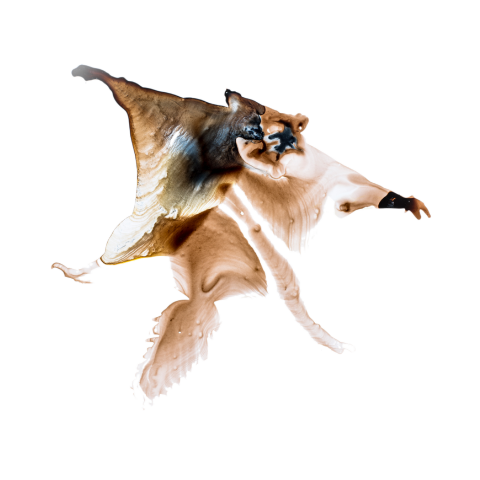
Namdapha Flying Squirrel
Scientific Name: Biswamoyopterus biswasi
Last Seen: 1981 in India
Years Lost: 43
Red List Status: Critically Endangered
The Namdapha Flying Squirrel is only known with certainty from a single individual collected in Namdapha National Park, the largest protected area in the Eastern Himalaya biodiversity hotspot, at altitudes of between 100 and 350 meters (or between 328 and 1,150 feet) above sea level. Although researchers have surveyed the surrounding area for the flying squirrel, there have not been any verified sightings of the species. Scientists believe this lost species occurs in dry deciduous montane forests along streams, and may be restricted to the area of a single valley within the Namdapha National Park.
(Illustration by Alexis Rockman)
Last Seen: 1981 in India
Years Lost: 43
Red List Status: Critically Endangered
The Namdapha Flying Squirrel is only known with certainty from a single individual collected in Namdapha National Park, the largest protected area in the Eastern Himalaya biodiversity hotspot, at altitudes of between 100 and 350 meters (or between 328 and 1,150 feet) above sea level. Although researchers have surveyed the surrounding area for the flying squirrel, there have not been any verified sightings of the species. Scientists believe this lost species occurs in dry deciduous montane forests along streams, and may be restricted to the area of a single valley within the Namdapha National Park.
(Illustration by Alexis Rockman)
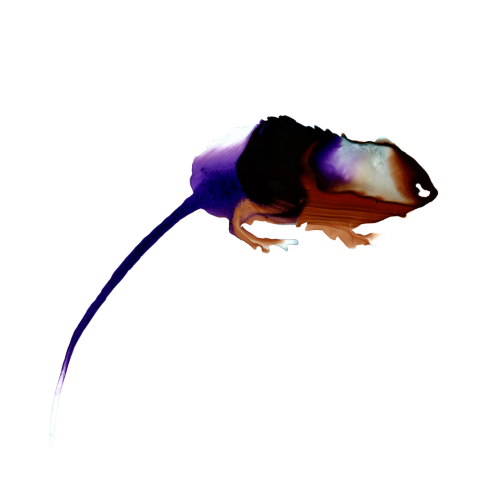
Togo Mouse
Scientific Name: Leimacomys buettneri
Last Seen: 1890 in Togo/Ghana
Years Lost: 134
Red List Status: Data Deficient
The Togo Mouse was discovered in 1890 in a single location. The two individuals collected at the time are the only clues we have about this species’ natural history because it hasn’t been recorded since. Researchers think the Togo Mouse may occupy parts of Ghana, as well as Togo. Contents found in the teeth and stomachs of the individuals collected indicate that the Togo Mouse’s diet includes insects. Its short tail suggests ground-living rather than a life spent up in the forest canopy.
Two expeditions failed to rediscover the Togo Mouse in the 1990s. Recent interviews with hunters in Ghana suggest local knowledge of the Togo Mouse as recently as 2011. The hunters believe that their activities caused several local small mammal populations to fall, including Togo Mice.
Field staff in the Kyabobo Range National Park, 12 miles west of the site of the Togo Mouse’s original discovery, also say they recognize the species when shown pictures, as do locals, calling it “Yefuli.” There is a pressing need to survey likely forest locations in both countries. Eighty percent of West Africa’s rainforests have already been degraded or cleared for agriculture. We need to act soon to protect any remaining Togo Mouse populations from losing the rest of their forest home—but first we need to make sure they are still around.
Last Seen: 1890 in Togo/Ghana
Years Lost: 134
Red List Status: Data Deficient
The Togo Mouse was discovered in 1890 in a single location. The two individuals collected at the time are the only clues we have about this species’ natural history because it hasn’t been recorded since. Researchers think the Togo Mouse may occupy parts of Ghana, as well as Togo. Contents found in the teeth and stomachs of the individuals collected indicate that the Togo Mouse’s diet includes insects. Its short tail suggests ground-living rather than a life spent up in the forest canopy.
Two expeditions failed to rediscover the Togo Mouse in the 1990s. Recent interviews with hunters in Ghana suggest local knowledge of the Togo Mouse as recently as 2011. The hunters believe that their activities caused several local small mammal populations to fall, including Togo Mice.
Field staff in the Kyabobo Range National Park, 12 miles west of the site of the Togo Mouse’s original discovery, also say they recognize the species when shown pictures, as do locals, calling it “Yefuli.” There is a pressing need to survey likely forest locations in both countries. Eighty percent of West Africa’s rainforests have already been degraded or cleared for agriculture. We need to act soon to protect any remaining Togo Mouse populations from losing the rest of their forest home—but first we need to make sure they are still around.

Zuniga’s Dark Rice Rat
Scientific Name: Melanomys zunigae
Last Seen: 1949 in Peru
Years Lost: 75
Red List Status: Critically Endangered
Zuniga’s Dark Rice Rat inhabits a desert-dryland habitat known as the coastal Lomas ecosystem, where it has been found in areas of mesic vegetation along stream banks and on hilltops, where the plants retain moisture from sporadic bouts of winter fog. This Peruvian rodent is Critically Endangered, and has not been seen since the former half of the 20th century, when it was described and individuals were collected from the low-lying hills of the Lomas de Atocongo, between elevations of 600 and 800 meters. We know very little about this species as more recent efforts have failed to relocate it. However, biologists believe it is terrestrial and probably nocturnal. As it was never recorded in modified habitats or protected areas, and the coastal Lomas ecosystem in which it dwells has been almost entirely converted for human uses such as livestock grazing and mining, its population is believed to have declined by more than 80 percent in a single decade. It remains severely threatened by extensive ongoing habitat loss within its remaining restricted range – estimated to be less than 100 km2. Further field studies are desperately needed if any remaining Zuniga’s Dark Rice Rats are to be rediscovered and reclaimed from the looming void of extinction.
Last Seen: 1949 in Peru
Years Lost: 75
Red List Status: Critically Endangered
Zuniga’s Dark Rice Rat inhabits a desert-dryland habitat known as the coastal Lomas ecosystem, where it has been found in areas of mesic vegetation along stream banks and on hilltops, where the plants retain moisture from sporadic bouts of winter fog. This Peruvian rodent is Critically Endangered, and has not been seen since the former half of the 20th century, when it was described and individuals were collected from the low-lying hills of the Lomas de Atocongo, between elevations of 600 and 800 meters. We know very little about this species as more recent efforts have failed to relocate it. However, biologists believe it is terrestrial and probably nocturnal. As it was never recorded in modified habitats or protected areas, and the coastal Lomas ecosystem in which it dwells has been almost entirely converted for human uses such as livestock grazing and mining, its population is believed to have declined by more than 80 percent in a single decade. It remains severely threatened by extensive ongoing habitat loss within its remaining restricted range – estimated to be less than 100 km2. Further field studies are desperately needed if any remaining Zuniga’s Dark Rice Rats are to be rediscovered and reclaimed from the looming void of extinction.
Explore More About Lost Species
Continue your journey to learn how lost species are found, why they disappear, and the full scope of our search efforts.
